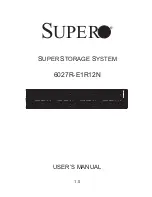
1-10
Tape Drive Installation
500300 Rev. U
1.7.4
Termination Power
The SCSI PCBA is capable of sup5 volts termination voltage to the SCSI
bus. This +5 volts is fed to the SCSI bus TERMPWR line through a circuit protector,
a blocking diode and the jumper VTERM as shown in Figure 1-9. TERMPWR is
connected to both the internal and external terminators in the drive. When SCSI
operation is enabled, the termination power is periodically monitored and if missing,
the front panel will display
NO SCSI TERM-V
.
QUALSTAR
TAPE DRIVE
ANOTHER
SCSI DEVICE
5
5
Blocking Diode
Circuit Protector
(current limiter)
W1 or VTERM Jumper
TERMPWR on SCSI Bus
(No Blocking Diode)
Figure 1-9 Diagram of SCSI Termination Power
1.7.4.1
Circuit Protector
A solid state circuit protector and a blocking diode protect the tape drive from
excessive current draw due to an overload on the SCSI bus TERMPWR line. The
circuit protector is connected in series with VTERM between the board’s termination
voltage and the termination voltage line on the SCSI bus. If the current through the
circuit protector is excessive, the protector will open and remain open until the
overload condition is removed. On earlier units, the circuit protector consisted of a
one-ampere fuse F4 (Qualstar P/N 626-0014-3).
1.7.4.2
VTERM Jumper
Your tape drive is shipped from the factory with the VTERM jumper installed, and
Qualstar recommends that you do not remove it. If you remove VTERM, termination
power (TERMPWR in Figure 1-9) must be available from another device on the SCSI
bus.
A problem can arise if another SCSI device, which does not have a blocking diode, is
connected to the SCSI bus (see Figure 1-9). When the power to that device is
switched off, if VTERM is installed, the device's +5 volt supply draws current from
the Qualstar drive via the SCSI bus TERMPWR line. If the current draw becomes
excessive, the circuit protector on the Qualstar SCSI PCBA opens, removing the
termination voltage from the SCSI bus. If this happens with your system: either
















































